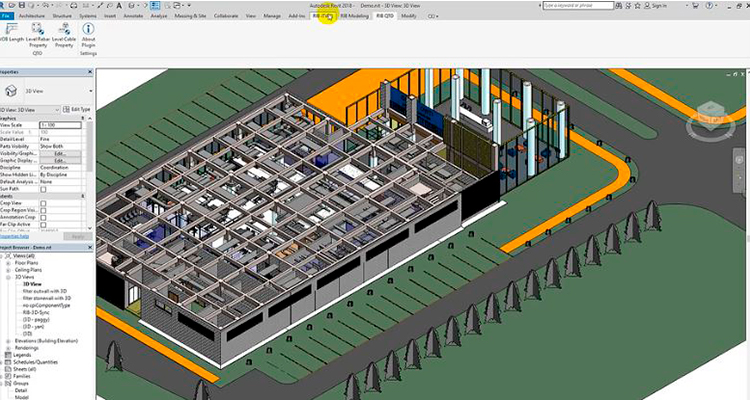How 5D BIM Simulation Streamlines Project Scheduling?

The construction industry is constantly evolving, and Building Information Modeling (BIM) has emerged as a game-changer in the way projects are designed, constructed, and managed. BIM is not only a 3D representation of a building but also incorporates additional dimensions, such as time (4D) and cost (5D). The integration of these dimensions enables 5D BIM simulation, which offers numerous benefits, including streamlined project scheduling. In this blog post, we will explore how 5D simulation revolutionizes project scheduling, optimizing efficiency, and reducing costs.
Understanding 5D BIM Simulation
Before diving into the specifics of how 5D BIM simulation streamlines project scheduling, it is essential to understand the concept itself. 5D BIM is an advanced methodology that adds the dimension of cost to the traditional 3D model (geometry) and 4D model (scheduling). This allows stakeholders to visualize not only how the project will be constructed over time but also the corresponding costs associated with each stage.
Accurate Quantity Takeoffs
One of the key features of 5D BIM simulation is its ability to generate accurate quantity takeoffs. By extracting data from the 3D model, the software can automatically calculate the exact quantities of materials needed for each construction phase. This level of precision enhances project scheduling by ensuring that the right materials are available when required, preventing delays caused by material shortages.
Real-Time Schedule Adjustments
Traditional project scheduling often involves static Gantt charts that are challenging to update when unexpected changes occur. In contrast, 5D simulation allows for real-time schedule adjustments. As soon as changes are made to the 3D model, the schedule automatically updates to reflect these modifications, keeping all stakeholders informed and aligned. This agile approach minimizes the impact of schedule disruptions and helps teams stay on track.
Clash Detection and Conflict Resolution
One of the most significant challenges in construction is the occurrence of clashes and conflicts between different building elements. These clashes can cause significant delays during the construction phase. 5D BIM simulation incorporates clash detection functionality, which identifies potential clashes during the planning stage. By resolving these conflicts before construction begins, project scheduling becomes smoother and more reliable.
Resource Allocation Optimization
Resource management is a critical aspect of project scheduling. 5D BIM simulation allows project managers to optimize resource allocation by visualizing resource availability and demand throughout the construction timeline. This ensures that resources, including labor and equipment, are efficiently allocated, minimizing downtime and maximizing productivity.
Also Read: A Deep Dive into the Benefits of 5D BIM Simulation
Cost Estimation and Budget Control
A major advantage of 5D simulation is its ability to provide accurate cost estimations at various stages of the project. With the integration of cost data, project stakeholders can track expenses, compare actual costs against budgets, and make informed decisions to keep the project on track financially. This financial transparency enhances project scheduling by ensuring that financial constraints are considered during the planning process.
Improved Collaboration and Communication
Efficient project scheduling heavily relies on seamless collaboration and communication among all project stakeholders. 5D BIM simulation fosters improved communication by providing a visual representation of the project’s progress, costs, and timelines. This shared understanding enhances collaboration among the various teams involved, leading to more effective scheduling and a higher likelihood of meeting project milestones.
Visualization for Stakeholder Engagement
Traditional project scheduling methods often struggle to engage stakeholders effectively. 5D BIM simulation offers a powerful visualization tool that enables stakeholders, including clients, contractors, and designers, to have a clear understanding of the project’s progress and costs. Engaged stakeholders are more likely to support the project and provide timely feedback, reducing the potential for delays.
Conclusion
In conclusion, 5D BIM simulation has transformed project scheduling in the construction industry. By incorporating cost data into the 3D and 4D models, this innovative approach allows for accurate quantity takeoffs, real-time schedule adjustments, clash detection, resource allocation optimization, and improved cost estimation. The enhanced collaboration and visualization capabilities of 5D BIM also contribute to streamlined project scheduling and successful project delivery. As technology continues to advance, embracing 5D simulation will become increasingly crucial for construction companies aiming to stay competitive and efficient in an ever-evolving industry.
Also Read: Point Cloud To BIM: How 3D Laser Scanning Revolutionizes As-Built Surveys




